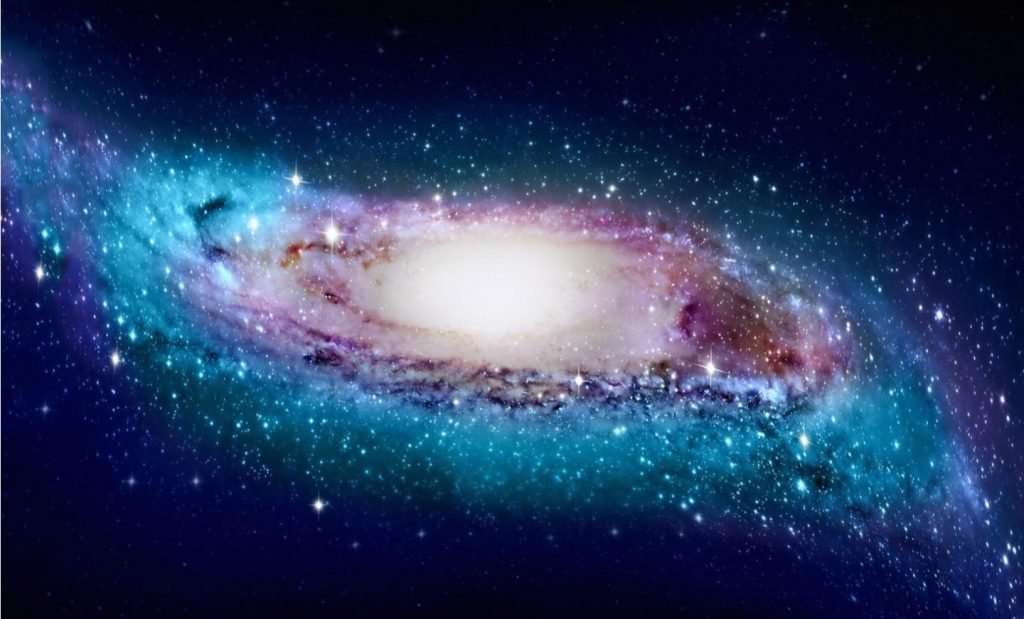An enormous “something” appears to have torn a hole in part of the Milky Way’s halo. The “dark substructure” was found via Gaia spacecraft observations—a mission producing the most detailed 3D map of our galaxy—with Harvard’s Ana Bonaca noticing a perturbation in a tidal stream. Bonaca is a leading authority on how the tidal field of the Milky Way galaxy disrupts globular clusters, and what the resulting debris can tell us about the underlying distribution of dark matter.
The “perturber”, as Bonaca dubs it, is unknown –“It’s a dense bullet of something,” she told the website LiveScience. The hole is enormous, so whatever made it must also have been. “It’s much more massive than a star. Something like a million times the mass of the sun. So there are just no stars of that mass. We can rule that out. And if it were a black hole, it would be a supermassive black hole of the kind we find at the center of our own galaxy.”
If there is nothing to disturb them, the streams are almost uniform in terms of their density. However, Bonaca noticed there was a hole in one as she presented at the recent American Physical Society conference in Denver during her talk on Dynamical Evidence for a Dark Substructure in the Milky Way Halo: “The on-sky morphology suggests a recent, close encounter with a massive and dense perturber,” an abstract to her work reported.
Telescope observations do not show any large luminous object moving away from the hole, which led Bonaca to suggest the perturbation could have been made by dark matter. “Observations permit a low-mass dark-matter subhalo as a plausible candidate,” Bonaca’s abstract says.
If it was a dense blob of dark matter that smashed through the tidal stream, it would be an exciting find for scientists, as it would provide them the opportunity of studying the elusive substance. The discovery of a dark matter “bullet” would also fit with current predictions about what dark matter is like—research suggests it is “clumpy,” in that it is not smooth and evenly distributed around the universe.
Identifying a clump of dark matter “opens up the possibility that detailed observations of streams could measure the mass spectrum of dark-matter substructures and even identify individual substructures,” her abstract concludes.
The first accurate 3D map of our galaxy revealed its true shape: warped and twisted. Astronomers from Macquarie University and the Chinese Academy of Sciences have used 1339 ‘standard’ stars to map the real shape of our home galaxy in a paper published in Nature Astronomy today. The artist’s impression, Chen Xiaodian, of the warped and twisted Milky Way disk is shown at top of the page.
An international team of astronomers discovered that the Milky Way’s disc of stars becomes increasingly ‘warped’ and twisted the further away the stars are from the galaxy’s center. “We usually think of spiral galaxies as being quite flat, like Andromeda which you can easily see through a telescope,” says Professor Richard de Grijs, an astronomer from Australia’s Macquarie University.
The Daily Galaxy via Ana Bonaca, Dynamical Evidence for a Dark Substructure in the Milky Way Halo and Live Science

MoronicChemistry on May 18th, 2019 at 02:03 UTC »
Its pretty far away so it happened a long time ago. They are looking for the object that caused it but likely visible or not the object has moved on.
wtfwasthat5 on May 18th, 2019 at 01:51 UTC »
I like to think this article is in the background of an alien invasion movie.
Lursmani1 on May 18th, 2019 at 00:47 UTC »
So they think it might have been a huge clump of dark matter that did this. That gets me wondering on what would happen if something like that hit us.